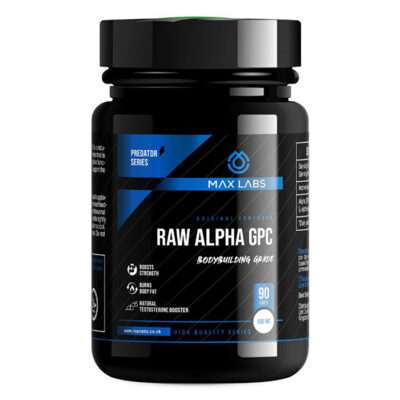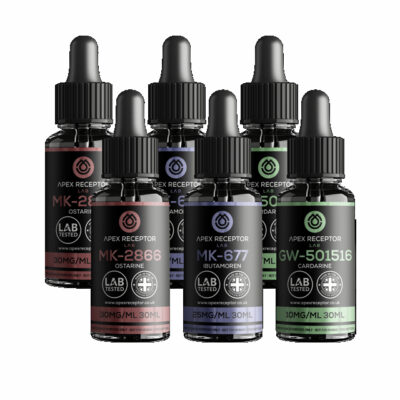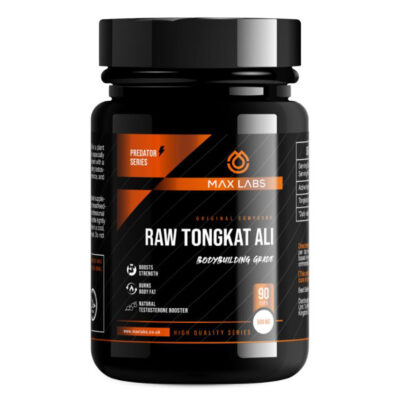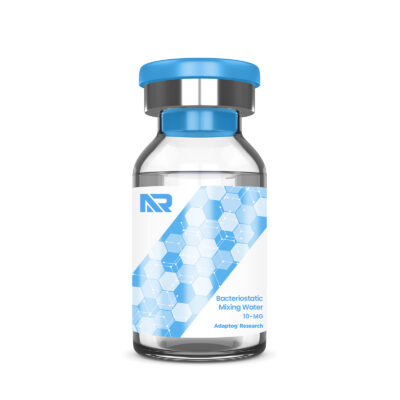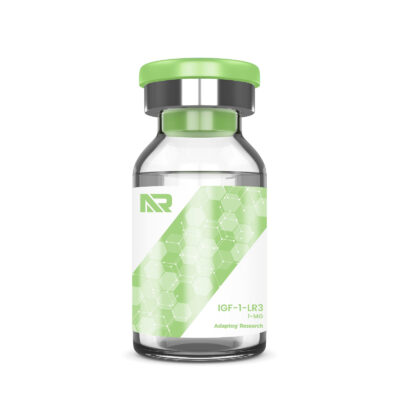SARMs and peptides have gained significant popularity in recent years, largely due to their potential to aid recovery and healing from injuries. Among these peptides, BPC-157 stands out as not only one of the most promising peptides but also one of the most extensively researched.
BPC-157, also known as Body Protection Compound-157. BPC-157 is a synthetic peptide made up of 15 amino acids. It was first isolated from human gastric juice and represents a stable fragment of the larger body protection compound (BPC) that naturally occurs in your digestive system.
Unlike other peptides, BPC-157 is remarkably stable and resistant to enzymatic degradation, allowing it to maintain its biological activity even during digestion. Studies have shown it can remain stable in gastric juice for at least 24 hours, making it potentially effective when administered orally.
The peptide was first described in scientific literature in 1993 by Sikirić and colleagues. Since then, it has been the subject of numerous studies investigating its healing properties across various tissue types.
How Does BPC-157 Work?
Scientific research has shown that BPC-157 interacts with multiple pathways in the body. These pathways actively contribute to tissue repair and cell regeneration:
1. Growth Hormone Receptor Regulation
Studies have shown that BPC-157 enhances growth hormone receptor expression. A study published in Molecules reported that BPC-157 increases the expression of growth hormone receptors in tendon fibroblasts at both mRNA and protein levels.
Within three days of treatment, this effect had increased by up to seven times. This increase in receptor expression boosts the growth hormone’s ability to promote proliferation, which, simplified, means tissue heals faster.
2. Angiogenesis Promotion
BPC-157 appears to stimulate angiogenesis (the formation of new blood vessels), which is crucial for healing. Research indicates that BPC-157 activates a specific pathway that is essential for blood vessel production and repair.
In some tests with chick embryos, even tiny doses (0.01 μg and 0.1 μg) shot up new blood vessel formation by 129% and 152% respectively. And in human cells, 0.1 μg/mL and 1 μg/mL made tube formation 119% and 147% better. In short, BPC-157 helps to deliver more oxygen and nutrients to the injured tissue.
3. Anti-Inflammatory Effects
The peptide demonstrates significant anti-inflammatory properties. In experiments on rats,
BPC-157 reduced inflammation, stiffness, and nodule formation.
In experimental models of Freund’s adjuvant–induced polyarthritis in rats, BPC-157 reduced paw inflammation, nodule formation, and stiffness. This regulation of the inflammatory response is critical for proper healing because it helps to control the excessive inflammation that is typical with injuries and often impedes recovery.
4. Collagen Formation and Fibroblast Activity
BPC-157 enhances collagen formation and supports fibroblast activity through pathways like FAK-paxillin. Studies have shown that BPC-157 increases ex vivo outgrowth of tendon explants, migration of tendon fibroblasts, and cell survival even under stress conditions, such as injury.
Since collagen is the primary structural protein in human connective tissues, this mechanism is particularly important for healing skin wounds, tendons, and ligaments. Additional research has shown an improvement in the structural and density of collagen fibres, aiding the strength and flexibility of tendons in the long term.
5. Nitric Oxide Modulation
Nitric oxide plays a crucial role in vascular function, blood flow, and tissue healing, and BPC-157 appears to modulate its production effectively. Research suggests that BPC-157’s effects on anastomosis healing are related to nitric oxide signalling, as L-NAME (a nitric oxide synthase inhibitor) worsens anastomosis healing in a manner that is ameliorated by BPC-157.
Research-Backed Benefits of BPC-157
With an increase in studies, the accompanying scientific literature on BPC-157 has also significantly increased, allowing more of us to understand the several potential benefits:
Musculoskeletal Healing
BPC-157 is one of the more widely researched peptides, and approximately 36 individual studies on its effects on musculoskeletal healing have been published in the last 30 years.
These studies documented improved biomechanical, structural, and functional outcomes in tendon, ligament, muscle, and bone injuries.
Specific studies highlight remarkable results:
- Tendon Healing: In animal models of transected Achilles tendons, BPC-157 accelerated healing, improved tendon macroscopic and microscopic structures, and promoted early functional recovery. Similar benefits were observed in rat quadriceps tendon healing post-transection, where BPC-157 improved tendon structures, reduced inflammation, and resolved myotendinous defects.
- Ligament Repair: In a rat with a medial collateral ligament (MCL) injury, BPC-157 treatment reduced post-injury valgus instability and contracture while restoring biomechanics of the MCL (such as load to failure, stiffness, and absorbed energy indices). After 90 days, treated animals showed normalised motor function and improved macroscopic and microscopic structures.
- Muscle Regeneration: Three separate rat muscle transection and crush models demonstrated that BPC-157 treatment improved muscle structure, function, and biomechanics. Outcomes included improved load to failure, motor function, muscle myofibril diameters, and reduced atrophy. Notably, BPC-157 improved structural and functional muscle healing even when administered alongside corticosteroids, which typically impair healing.
- Bone Healing: In rabbit models, intramuscular administration of BPC-157 performed similarly to percutaneous injection of autologous bone marrow or autologous bone grafting in improving callous mineralisation and resolving bone defects with predominantly lamellar bone formation versus fibrous scar tissue.
Whilst not yet approved for human consumption, these specific studies on BPC-157 make it an exciting prospect for the future of sports rehabilitation and sports medicine.
Gastrointestinal Healing
Given its origin in gastric juice, it’s not surprising that BPC-157 demonstrates significant benefits for gastrointestinal health. Research suggests it promotes mucosal integrity and homeostasis, potentially benefiting those with various digestive conditions, such as IBS.
Studies assessing BPC-157 in experimental models of short bowel syndrome found that injections of BPC-157 ameliorated this state, even when the condition was worsened with the addition of L-NAME and diclofenac.
Most notably, a benefit for anastomosis healing (esophagogastric) has been found in rats given BPC-157 in drinking water (approximately 10 ng/kg or 10 μg/kg daily) without an injection, suggesting that BPC-157 may be orally active in the alimentary canal.
Pain Management
Some studies have suggested that, likely due to BPC-157’s healing properties, a byproduct of that is potential pain management and an improvement in pain threshold.
Neurological Applications
Although still in the preliminary stages, research so far indicates that BPC-157 may have neuroprotective effects. These studies chemically induced damage to rats using the toxin MPTP to mirror symptoms of Parkinson’s Disease. The rats were then given BPC-157 either in their drinking water or directly into their stomachs via injections. The results appear to show the mitigation of some of the damage you would typically expect to see in Parkinson’s Disease.
Pharmacokinetics and Metabolism
Understanding how BPC-157 is processed in your body is crucial for its therapeutic application. Research has revealed several important aspects of its pharmacokinetics:
1. Metabolism: When incubated in plasma ex vivo, a large amount of the peptide is metabolised (79±2%) within 60 minutes. However, the remaining intact peptide appears to stabilise and persist for up to 240 minutes.
2. Excretion: The main excretory pathways of BPC-157 involve the liver and kidneys, consistent with the excretion characteristics of peptide drugs.
3. Tissue Distribution: After administration, radioactivity intensity in most tissues peaks at 1 hour, slightly later than the peak time of total radioactivity concentration in plasma (0.167 h). Peak concentrations are highest in the kidney, liver, stomach wall, thymus, and spleen, with lower concentrations in the brain and body fat.
4. Half-Life: BPC-157 has a relatively short half-life of less than 30 minutes, similar to other peptide hormones like human growth hormone and erythropoietin.
Human Studies and Clinical Applications
The majority of research on BPC-157 has largely been conducted on animals, mainly rodents; however, there are a few emerging studies on humans. Although comprehensive safety data were not provided, a retrospective clinical study of 12 patients with chronic knee pain showed that 7 of those patients reported relief for more than six months following an injection of BPC-157 directly into the knee joint.
Safety Profile and Regulatory Status
BPC-157 has an incredible amount of benefits; however, it is not FDA-approved for humans, and the World Anti-Doping Agency has banned its use due to its benefits potentially enhancing athlete performance. In preclinical animal studies, when taken for six weeks or less, regardless of dose (up to
20mg, BPC-157 has not been shown to cause any damage or toxicity across multiple organs, including the liver, prostate, ovaries, brain, thymus, kidneys, and lungs.
BPC-157 has a urine detection window of approximately 4 days. This poses a challenge in detecting the peptide for anti-doping agents and sporting bodies, particularly in bodybuilding, weightlifting, and ultra sports, where peptides are often used to aid recovery time and healing of injuries.
Conclusion
BPC-157 has benefits that have long been recognised by those in specific industries, especially bodybuilding and ultramatharon circles. It gained interest and popularity when Joe Rogan and Andrew Huberman, a neuroscientist and professor of neurobiology, discussed the benefits and their personal experience with BPC-157 on Rogan’s podcast.
Due to its significant benefits in healing and regeneration, and how it works to stimulate and accelerate the body’s natural processes, many are calling for BPC-157 to undergo more human studies and be approved for the treatment and recovery of injuries and other medical issues.
For now, taking BPC-157 is not advised; however, if you decide to, it is best to consult with a medical professional first and take it with caution and monitoring of side effects. You can find a comprehensive guide on the benefits and side effects of BPC-157 here, and you can purchase BPC-157 here.
References
- Emerging Use of BPC-157 in Orthopaedic Sports Medicine. PMC.
- Pentadecapeptide BPC 157 Enhances the Growth Hormone Receptor Expression in Tendon Fibroblasts. PMC.
- Gastric pentadecapeptide body protection compound BPC 157 and its role in accelerating musculoskeletal soft tissue healing. Pubmed.
- Pharmacokinetics, Distribution, Metabolism, and Excretion of Body Protection Compound-157. Frontiers in Pharmacology.
- Exosomes provide a protective and enriched source of miRNA for biomarker profiling compared to intracellular and cell-free blood – PubMed
- Pentadecapeptide BPC 157 positively affects both non-steroidal anti-inflammatory agent-induced gastrointestinal lesions and adjuvant arthritis in rats – ScienceDirect
- Chang, C. H., Tsai, W., Hsu, Y. M., & Pang, J. S. (2014). Pentadecapeptide BPC 157 Enhances the Growth Hormone Receptor Expression in Tendon Fibroblasts. Molecules.
- A new gastric juice peptide, BPC. An overview of the stomach-stress-organoprotection hypothesis and beneficial effects of BPC – PubMed
- The promoting effect of pentadecapeptide BPC 157 on tendon healing involves tendon outgrowth, cell survival, and cell migration – PubMed
- Gastric pentadecapeptide body protection compound BPC 157 and its role in accelerating musculoskeletal soft tissue healing – PubMed
- Vasireddi, N., Hahamyan, H. A., Salata, M. J., Karns, M. R., Calcei, J. G., Voos, J. E., & Apostolakos, J. M. (2025). Emerging Use of BPC 157 in Orthopaedic Sports Medicine: A Systematic Review. HSS Journal® The Musculoskeletal Journal of Hospital for Special Surgery.



